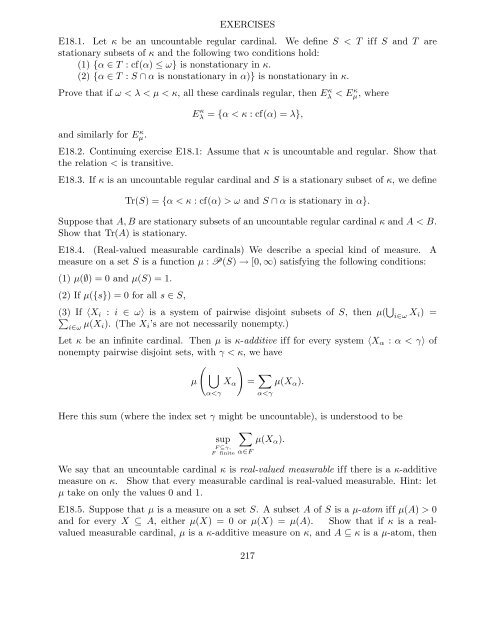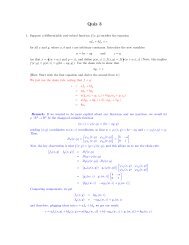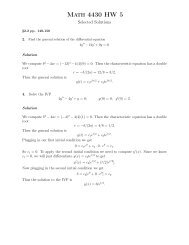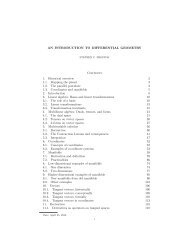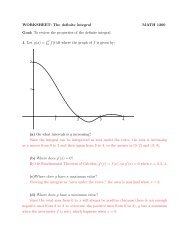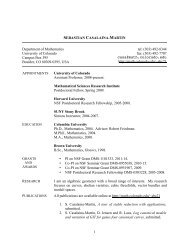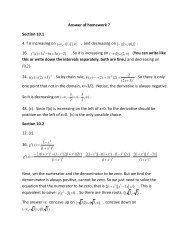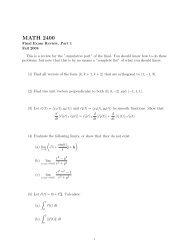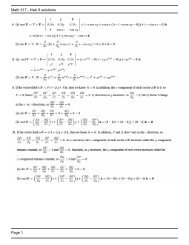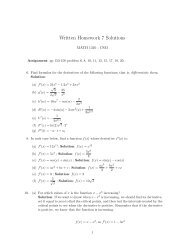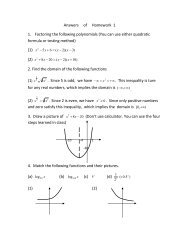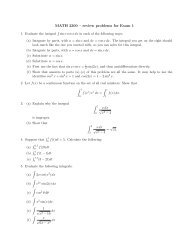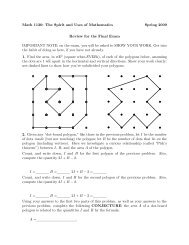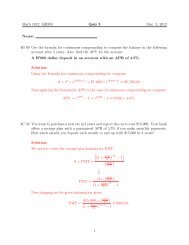18. Large cardinals
18. Large cardinals
18. Large cardinals
You also want an ePaper? Increase the reach of your titles
YUMPU automatically turns print PDFs into web optimized ePapers that Google loves.
EXERCISES<br />
E<strong>18.</strong>1. Let κ be an uncountable regular cardinal. We define S < T iff S and T are<br />
stationary subsets of κ and the following two conditions hold:<br />
(1) {α ∈ T : cf(α) ≤ ω} is nonstationary in κ.<br />
(2) {α ∈ T : S ∩ α is nonstationary in α)} is nonstationary in κ.<br />
Prove that if ω < λ < µ < κ, all these <strong>cardinals</strong> regular, then E κ λ < Eκ µ , where<br />
and similarly for E κ µ .<br />
E κ λ = {α < κ : cf(α) = λ},<br />
E<strong>18.</strong>2. Continuing exercise E<strong>18.</strong>1: Assume that κ is uncountable and regular. Show that<br />
the relation < is transitive.<br />
E<strong>18.</strong>3. If κ is an uncountable regular cardinal and S is a stationary subset of κ, we define<br />
Tr(S) = {α < κ : cf(α) > ω and S ∩ α is stationary in α}.<br />
Suppose that A, B are stationary subsets of an uncountable regular cardinal κ and A < B.<br />
Show that Tr(A) is stationary.<br />
E<strong>18.</strong>4. (Real-valued measurable <strong>cardinals</strong>) We describe a special kind of measure. A<br />
measure on a set S is a function µ : P(S) → [0, ∞) satisfying the following conditions:<br />
(1) µ(∅) = 0 and µ(S) = 1.<br />
(2) If µ({s}) = 0 for all s ∈ S,<br />
(3) If 〈X i : i ∈ ω〉 is a system of pairwise disjoint subsets of S, then µ( ⋃ i∈ω X i) =<br />
∑<br />
i∈ω µ(X i). (The X i ’s are not necessarily nonempty.)<br />
Let κ be an infinite cardinal. Then µ is κ-additive iff for every system 〈X α : α < γ〉 of<br />
nonempty pairwise disjoint sets, with γ < κ, we have<br />
( ) ⋃<br />
X α<br />
α


